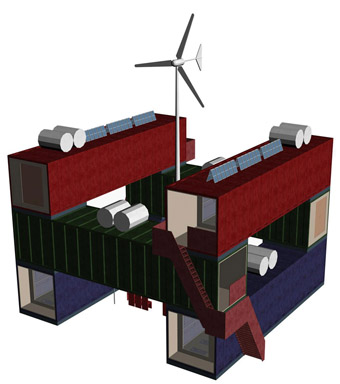

Natural disasters are a widespread phenomenon, which has destroyed entire habitable areas at times, leaving through its passage hundreds of thousands of dead, injured and homeless.
Housing these people is the hardest problem a state has to solve after such a disaster occurs. Millions of people around the world have temporarily been housed in rough accommodation, often under unacceptable conditions of living.
The continual improvement of construction materials, in combination with the spread and advance of technology, nowadays, give us the opportunity to design temporary accommodations for such populations which can provide comfort and qualitative living, under a low budget.
The target of this project is to design an autonomic and functional unit of inhabitation, which can be established rapidly in unlimited numbers under any geographic features, creating settlements of small, medium or unlimited extent.
The shell of this unit is the formal container that is used universally to store and transfer commodities. The starting point of the project was not just to design a basic unit of inhabitation -despite the fact that this constitutes a temporary accommodation- but to design a complete and functional accommodation.
This unit is repeated in space in various arrangements, according to the special geographic features of each area, creating in this way several centers of inhabitation. The repetition of these centers creates a settlement, the repetition of the settlement creates a community and the repetition of the community creates a city.
The structure and size of this unit are the ideal parameters to rapidly create settlements of a low budget that can provide comfortable living conditions. With the appropriate design, these units can also be used to house several services. This fact enforces the idea of permanent residence in the settlement.
In this way, despite the fact that the original intention of the project was to create temporary units of inhabitation, during the design a main question arises: whether it would be possible to use such a settlement to accommodate populations permanently or only temporarily.
The fact that containers can be transferred and placed rapidly, gives us the opportunity to create a city in a few days, and in addition, to create movable cities that can be transferred from one place to another.
In this occasion we have to view cities in a different way to the one we used to: not only as an amount of fixed, stable and unchangeable elements, but as a living organism that is transformed through time and that is affected by several elements from its external and internal environment.
Supervisor: Stylidis Iordanis
Reference Number: 185
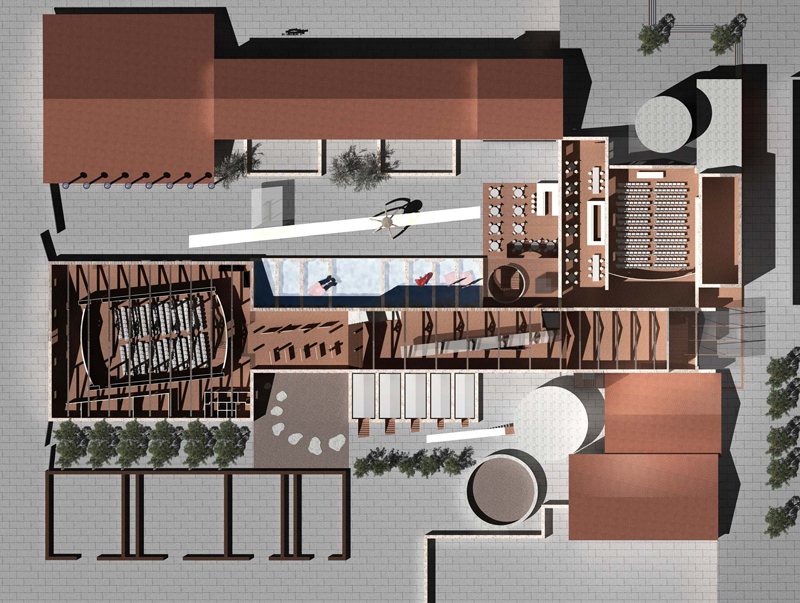

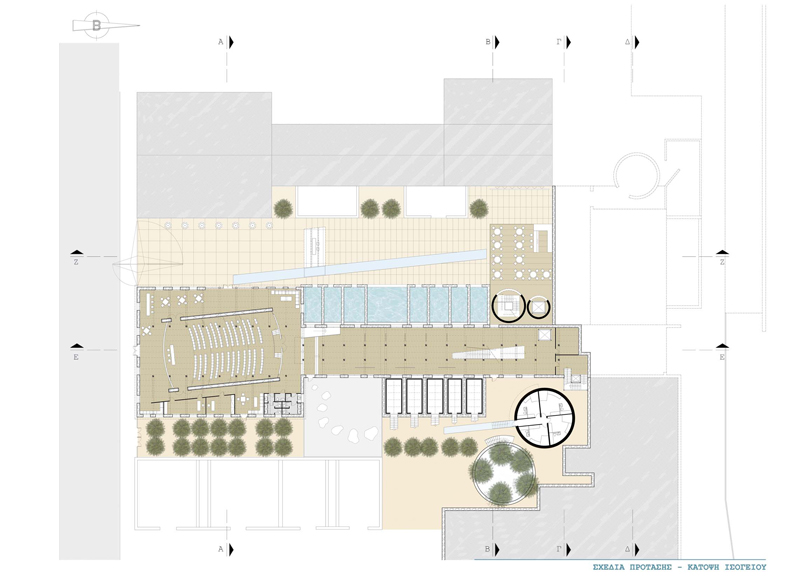

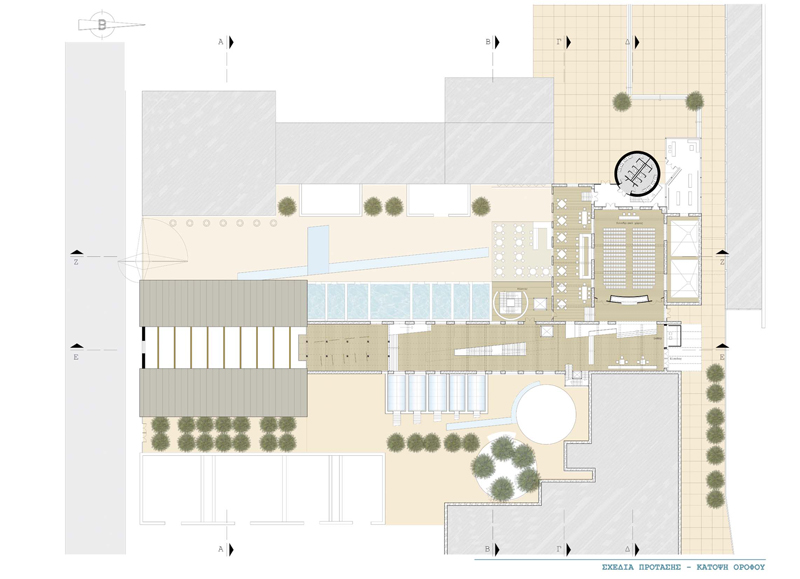





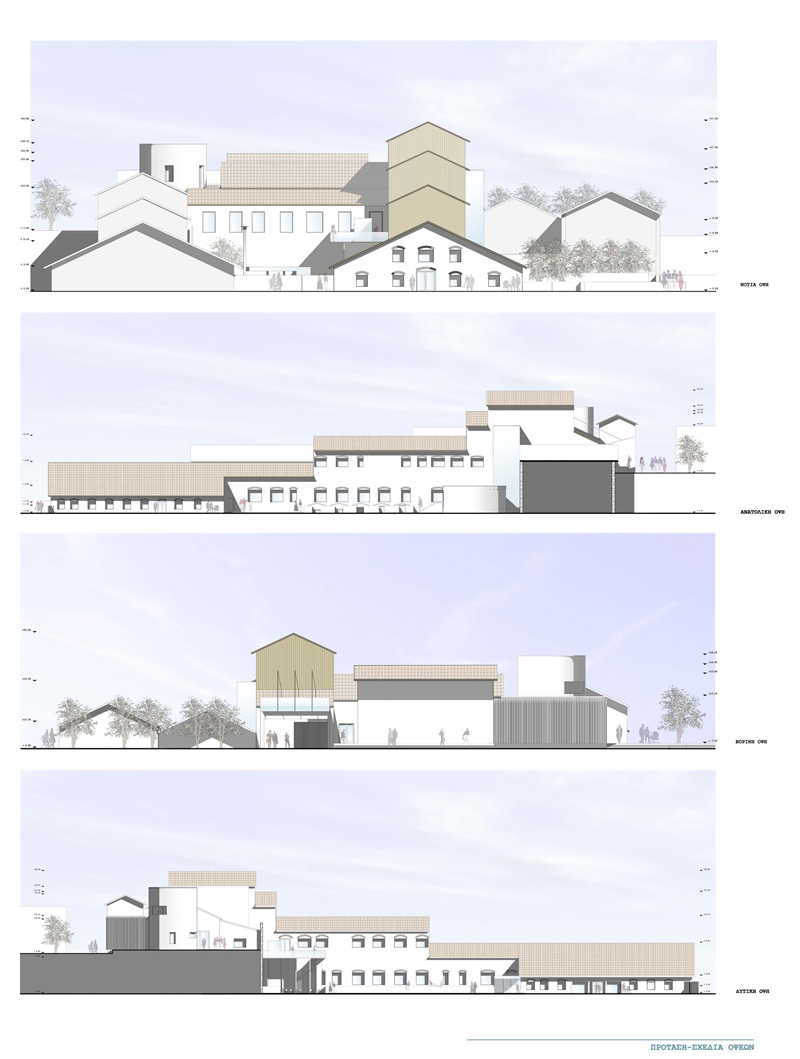

The Laurio Park of Technology (L.P.O.T.) holds a significant number of buildings ready for immediate host of new activities. The Flotation complex stands at the centre of the older “core” of the industrial complex (which belonged to the French Company) sited at the Kyprianos region. At this region, the procedure of the poor materials’ enrichment with the according method was taking place. The Flotation complex is being preserved almost at its whole, together with its equipment at its place, whereas the time deterioration is obvious.
A general principle for the renovation and the “adoption” of the new uses by the historical buildings, is that every new intervention must respect and show the morphological building characteristics, taking into consideration its structural design. With this in mind, the preserved Flotation complex was valued as an architectural characteristic and as a construction method of that period and it was considered that the preservation of both the special characteristics and of the methods and materials used at the complex’s construction was needed (as far as its preservation status allowed this).
The interventions needed for its structural sufficiency and for its response to the new functions, dealt with such a way so as not to change its initial form but also not to underestimate the intervention itself. The basic principle was the use of modern materials and shapes so as to join harmonically and to be distinguished with ease in the whole historical complex.
The Laurio Park of Culture and Technology decided to apply cultural uses to this building (galleries – museums along with the according offices and secondary facilities). This use does not imply to bidding procedures, and as a result the needs for the new functions can easily be adapted to the form of the historical building without the need for significant conversions. Furthermore, the architectural idea for the redesign of the building, was based upon the materials’ flow, which was from the upper levels to the lower ones –during the materials’ working-. This fact determined the form and the organization of the whole building.
The re-use and conversion of the historical Floatation building into a Conference Centre, achieves the goals of the L.P.C.T and this way the complex will become alive and will be turned into a gathering point inside the complex and the region all around.
Supervisor: Triantafillidis Giorgos
Reference Number: 196
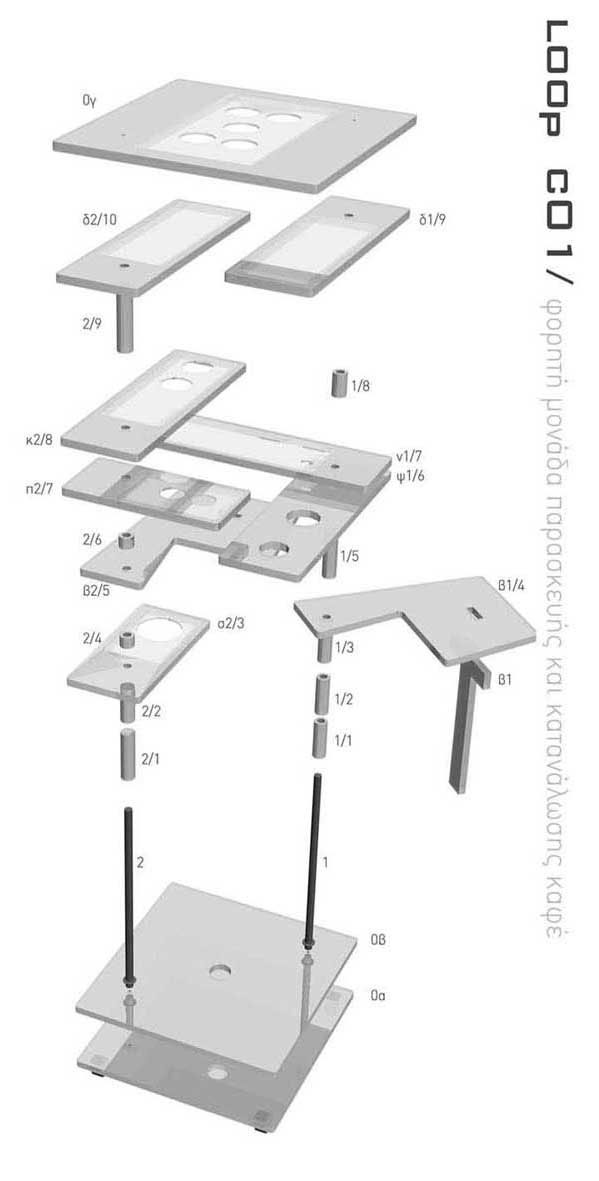

The unit, loop c01, was designed for the production and the consumption of coffee. The name includes the total of the energies that take place with circular repetition in the unit. A sequence of proceedings is translated in a sequence of levels at height. An energy per surface. The slots indicate the equipment. The orbits of the bodies engrave the surfaces, put them in rotation. The movement is intensified.
The unit is collapsible and wheel-driven. It is stored in a durable and waterproof package, with dimensions 0.60 x 0.60 x 0.30 [m.]. While in use, it is assembled, on a wheel-driven base with two axes, whose operation is to carry and firm up, at the desirable height, the wooden surfaces[with plexiglass], on which the action takes place, in order to produce and therefore consume coffee. The surfaces are supported by wooden props which are placed on the axes [the axes penetrate the props] and on either sides of the surfaces, in order to place each surface on the desirable height. The unit includes four seats, and also materials and equipment for the production and the consumption of coffee by four individuals.
When it is assembled, the surfaces of the operations-actions are distinguishable. I waste. I sit down. I store mugs. I store glasses. I store water and coffee materials. I produce coffee. I read. I consume coffee.
Two of the seats are collapsible and independent. When disengaged from the two main axes, they unfold and are stabilised while they are used. For their storage, they are placed on the base of the unit, having a slot in order the axis to run through them. They occupy less volume and also facilitate the storage of the remaining surfaces.
Such an object of urban use can be seen in spaces with either needs of saving space, or needs of ephemeral movement.
The assembly is executed by the user.
The proposed materials are wood with plexiglass, and the capability of autonomous lighting also exists, for better aesthetic result as well as for the ability to use the object all day long.
Supervisors: Kotionis Zissis, Giannisi Phoebe
Reference Number: 166
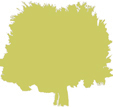

The landscape
A reddish rendered box is viewed in pieces by the visitor as the olive groves surround it.
A scaleless path is rising out as the ground starting to fall. The path anchored vertical at the reddish box keeping at a distance the cars so as not to break the spell.
The visitor as crossing the path is appreciating the “infinity” olive grove, before he reached the slot of the reddish box. This is the gate for another world.
Entering the slot. The experience of appreciation of the “infinity” olive grove is turning into the experience of its marginal side, the side which is cut so unexpectedly from a “wall“ made by bushes. The wall is interrupted by some secret paths.
Reproduction of this natural wall is a sculpture of parallel walls placed in absolute juxtaposition with the reddish box. The sculpture functions as a louver revealing the “infinity” sea.
Supervisors: Philippitzis Dimitris, Paniyiris Costis
Reference Number: 167


The present study is realized in the city of Edessa and in particular is placed in her commercial centre. The presence of field of athletic activities occupies a large department of region for many years and recently was taken decision on his transport apart from the city. The area that is released brings about new designing proposals and solutions that will allow the city to recover the identity of centre and recreate her image. The region adjoins to the old built-up core Barosi, to a park of green as well as to the park of waterfalls where are condensed the natural characteristics of city. The absence of Archaeological museum from the city and the need of creation, constituted question to contradistinction the last interval, as for the proposal that was deposited for his placement in to an already shaped green park and finally was rejected by the citizens. The management of designing proposal deposits in 4 axes: creation of museum, congress centre, parking and configuration of landscape-square. The natural characteristics as water and the ground, as well as their relation, puts on the synthetic process, highlights the physiognomy of city.
Supervisor: Triantafillidis Giorgos
Reference Number: 168


KOTZIA SQUARE IS A CENTRAL AND ONE OF THE MOST IMPORTANT SQUARES IN ATHENS. SECOND IN SIZE, RIGHT AFTER SYNTAGMA SQUARE, IN THE MIDDLE OF THE COMMERCIAL TRIANGLE OF THE CITY, IT HAS THE DOUBLE IDENTITY OF BEING THE CITY HALL SQUARE AND AN EXPOSURE PLACE OF ARCHAILOGICAL FINDINGS, SINCE AN ANCIENT ROAD AND PART OF A SEMETARY HAVE BEEN FOUND ON IT’S NORTHEAST SIDE, DATED SINCE THE 5th CENTURY B.C. BECAUSE OF THAT DISCOVERY, THE RENOVATION OF THE SQUARE HAS BEEN CANCELED AT THE MOMENT. THE TARGET OF THIS WORK IS TO SUGGEST A SOLUTION FOR THE PROPER DISPLAY OF THE ARCHAIOLOGICAL FINDINGS AND TO EMFASIZE THE CHARACTER OF A CITY HALL SQUARE.
Supervisors: Triantafillidis Giorgos, Gavrilou Evelyn
Reference Number: 160


One of the four National Tobacco Organizations was based in Volos. The building was built during the period 1959-1961. It is found at the center of Volos between the streets Ogl- Anthimou Gazi- Gamveta and includes three buildings.
The basic building was used as a storage space for tobacco. Due to the building’s position in the city’s web, the tobacco treatment did not take place there and not all the machines were used. The building’s plan wasn’t so appropriate; therefore the tobaccos’ picking took place in half the fifth and fourth floor where they were later on sent out.
In 1992 the building stopped its function and the Ministry of Agriculture gave it up to Magnesia’s Prefecture. It is intended for mixed office use.
The building existed as a space of production and its place in the city’s web forms an important criterion for its later use. The creation of a design school in combination with the accommodation of the design museum and with the nearby distance of the university colleges in the city of Volos, cannot but only constitutes an easy access network and reference point for the area.
Supervisors: Stylidis Iordanis, Psychoulis Alexandros
Reference Number: 162

